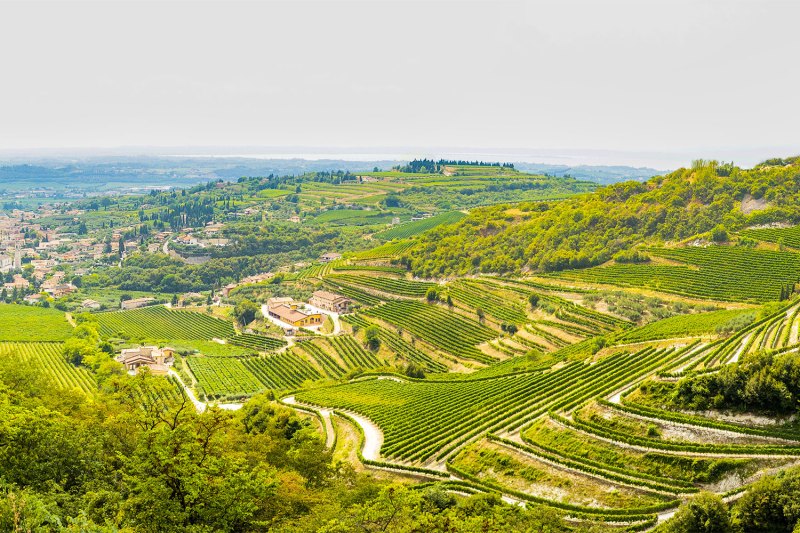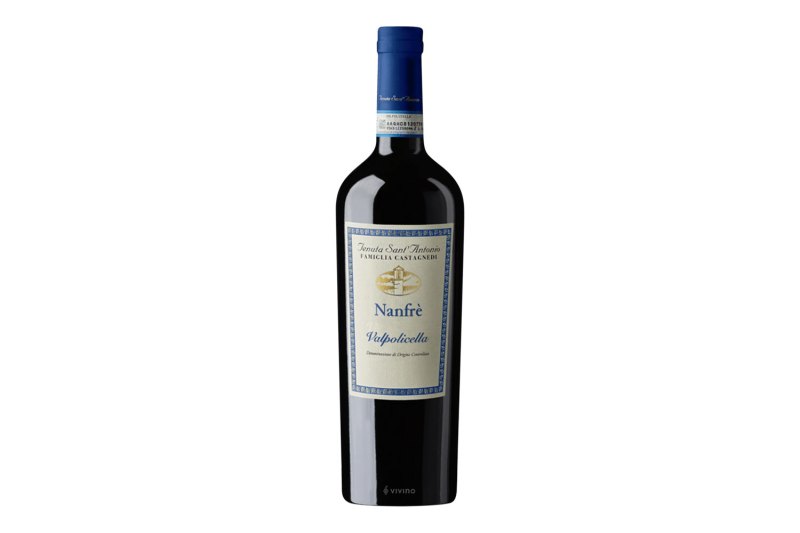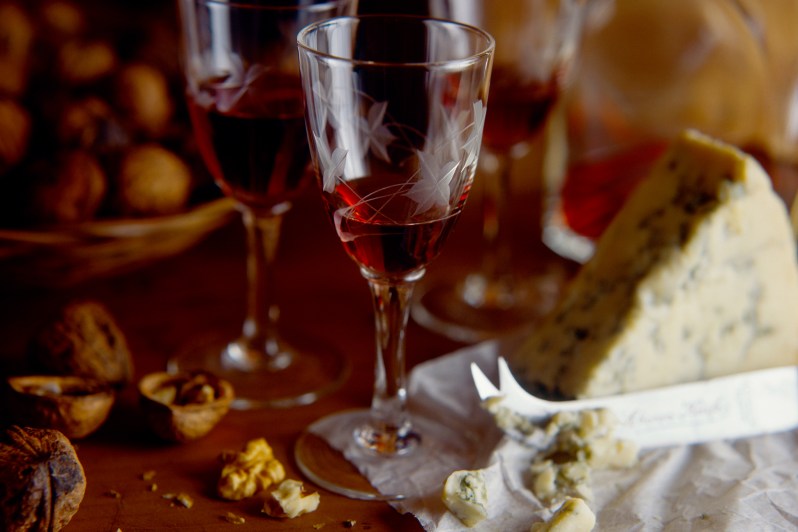
Dessert wine deserves more of your time. That’s because, like Mexican cuisine or the best coffee beans, there’s an entire world worth exploring. And while generally on the sweeter side, dessert wines are more than syrupy fruit bombs.
Many options within the dessert wine genre tout profound complexity and pair perfectly with winter dishes like butter-drenched shellfish. Some, like Sauternes, can age for generations, while others, like sweet Riesling, can beautifully take the sting out of spicy fare like Thai food. Some can serve as the perfect post-meal nightcap.
Here are the dessert wine styles you need to know.
Typical cool climate dessert wines
The following dessert wines are common in cooler growing areas where a later harvest or even a post-freeze pick can yield some unique juice.
Ice Wine
Living up to its name, ice wine is made from frozen clusters, either naturally chilled or through the power of refrigeration. Freezing the fruit concentrates the sugars, allowing for a sweeter wine. Low yields mean there’s generally not that much ice wine out there, with countries like Canada and Germany being leading producers. In the U.S., you’ll find them being made in the Midwest, Finger Lakes, and other cold, mostly northern regions.
The style dates back to the Romans, with the Germans popularizing the style in the 19th Century. Thanks to a healthy amount of acid to balance out the sugar, ice wines tend to be quite refreshing. Try them with spicy Indian curries, creole food, or a decadent terrine or pate.
Late-Harvest Wine
Made from grapes harvested on the latter side, this wine style is like an ice wine but often made from fruit picked before the freezing conditions set in. The grapes are more dehydrated, concentrating the juice and upping the sugar-to-juice ratio. That means a sweeter style, but not necessarily overly so. Some are made from noble rot (often quite sweet), but cleaner versions made without any botrytis in the vineyard are crafted, too. Look out for some quality ones from the Pacific Northwest, dealing in grape varieties like Gewurztraminer, Sauvignon Blanc, and more. We like them with sweetbreads and lighter cookies along with nutty cheeses.
Sauternes
A wine with a bonafide pedigree, Sauternes is sought-after for its elaborate flavor profile and ability to age for a very, very long time. The wine tends to evolve beautifully with some cellaring and, while generally more expensive, is usually worth the splurge. The wine’s calling card is the brilliant yellow hue, derived from the Semillon grape in France. Because the wine is made with noble rot, the vintage variation can be pretty dramatic. So, splurge a bit with a few different vintages, pour yourself a vertical tasting, and pair it up with something equally high-brow, such as foie gras.
Sweet Riesling
By all means, seek out some bone-dry Riesling, but it’s the sweeter versions that arguably made the varietal famous. We love a semi-sweet option with spicy Chinese cuisine or a fully sweet one with salty cheese like gouda or parmesan. Look for classic regions like Pfalz and Mosel, but don’t overlook options coming out of Australia and the U.S., too.
Common Italian dessert wines
Italy does dessert wine exceptionally well, from fizzy options to ones meant for dunking your biscotti.
Lambrusco
Fizzy wine from Italy, Lambrusco hails specifically from the scenic Emilia-Romagna region. Off-dry versions go great with sides like sweet potato fries or a classic pasta bolognese. These wines are often bargains, and lots of fruit and floral notes show up on the sweeter options while the dryer versions — gaining more and more popularity these days — can tout nice structure reminiscent of a good Champagne or sparkling Rose. You can’t go wrong with a good seafood and wine pairing, like Lambrusco with a creamy shrimp pasta, or chilled down and enjoy alongside fresh oysters.
Moscato
Featuring one of the oldest grapes in viticulture, Moscato is one of the more recognized dessert wines. As such, there are a lot of decidedly terrible versions of the stuff, so be savvy when shopping. We suggest Italian takes from the Asti DOCG (it’ll say as much on the label). These offerings burst with peach and honeyed floral notes while hanging on to some juicy acidity. There tends to be a bit of enthusiasm, and they go great with fruit-driven desserts like strawberry rhubarb pie or a tart.
Valpolicella
The dryest versions of this wine drink a bit like a Beaujolais, while the sweetest options, dubbed Amarone, function much more like conventional dessert wines. This wine from Veneto usually shows red fruit elements along with some oak and spice. Amarone does tremendously with earthy and hearty winter fare, like short ribs, mushroom pasta, or even gamey meats like boar, elk, and lamb. All in all, Valpolicella is often a toothy wine that can more than stand up to your favorite big meat proteins.
Vin Santo
A classic Italian wine that begs for some biscotti, Vin Santo is also great with cheeses like gorgonzola. Amber in color, the wine was born in Tuscany and continues to be a great post-meal sipper, especially with something sweet to nibble on. Again, it’s all about concentration as the grapes dry out on straw before fermenting into wine. Vin Santo ages in little oak barrels and translates to “holy wine,” making sipping on the stuff a divine endeavor.
Other dessert wines
This story is the tip of the dessert wine iceberg, but here are a few more you should certainly have in your repertoire.
Madeira
Hailing from the Portuguese islands of the same name, Madeira is a fortified wine dating back to the 16th Century. The spectrum of the stuff is pretty broad, going from bone dry to quite sweet. The vast majority of Madeira is made from the Negra Mole grape, and neutral grape spirits come into play when the winemaker decides to halt the fermentation process (either keeping some residual sweetness or going a dryer route). Unlike most wines, Madeira is aged at relatively warm temperatures, which speeds up the process and tends to oxidize the liquid, creating colors and flavors similar to certain types of sherry. Treat the sweeter versions to some dark chocolate or funky cheese, and try the dryer ones on their own or with pickled items you might find on a charcuterie board.
Port
The good port is a treasure and maybe the ultimate cold-weather sipper, just begging for a fireplace and some Stilton cheese or herbed and roasted nuts. While traditionalists champion the real stuff from Portugal, producers all over the world are making some great options, including here in the U.S. Yes, port tends to be sweeter and red, but do not discount the white releases and dryer offerings at that. Be sure to serve in a smaller, tulip-shaped glass and try it on for size with some candied fig or a bacon-wrapped date.
One can be a student of wine for their entire life. Keep your knowledge sharp with our wine terminology guide and feature on fortified wine styles. Also, if you feel like wowing friends next time you host, read about how to mix cocktails with Marsala. There’s never a dull moment in the land of fermented fruit.







